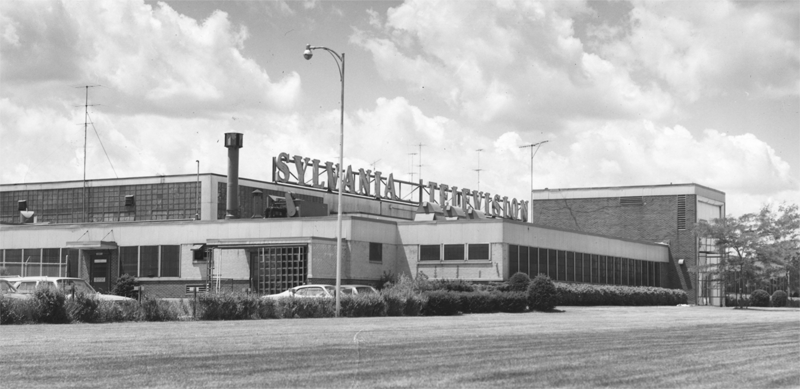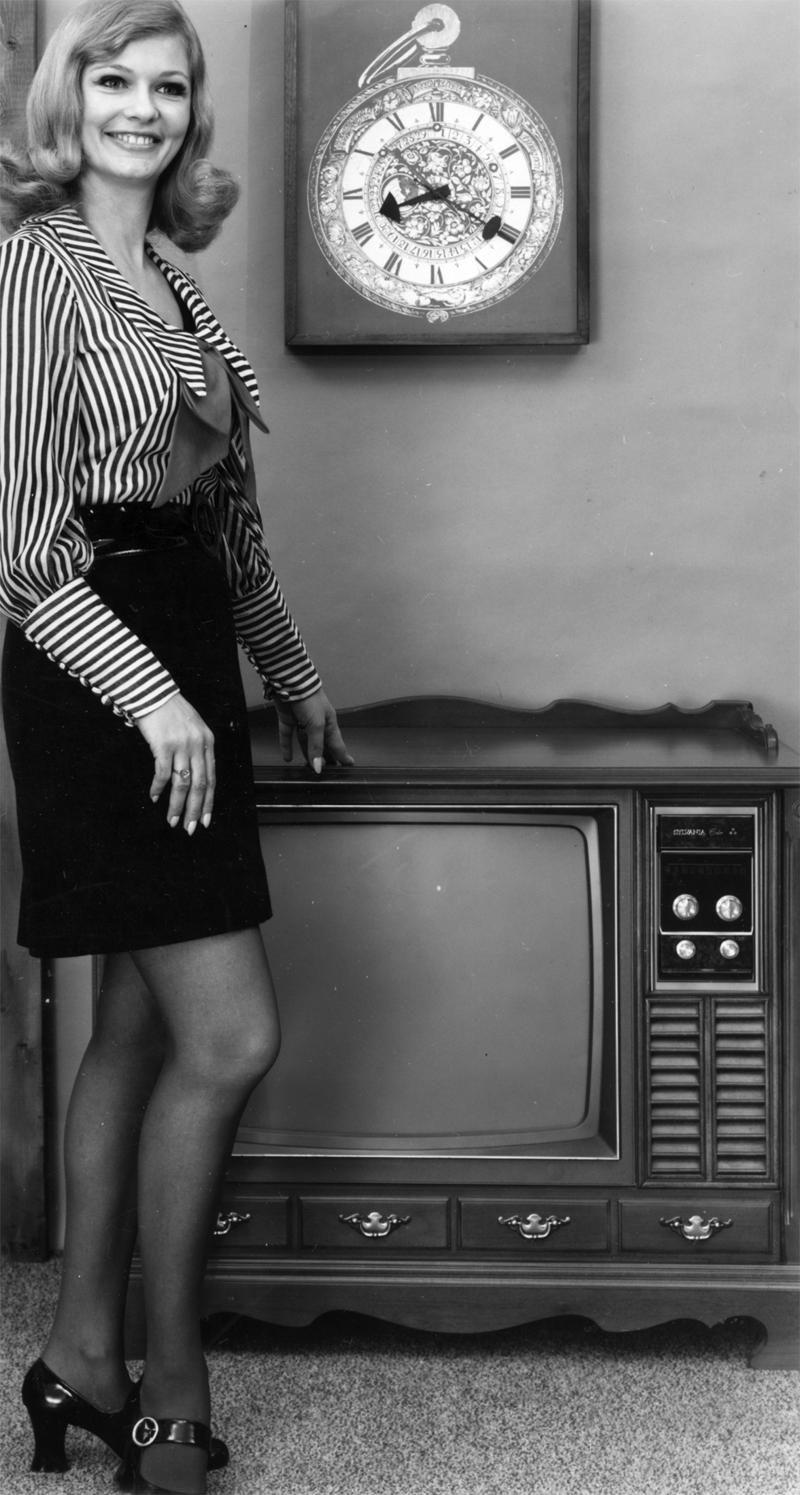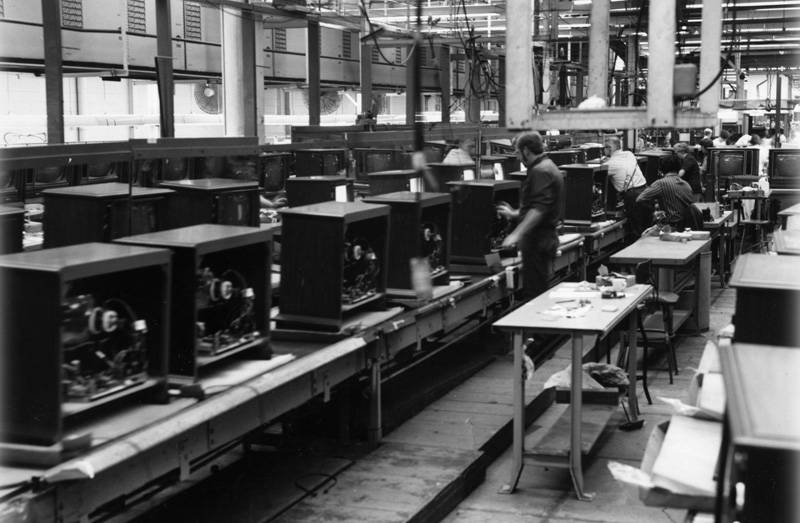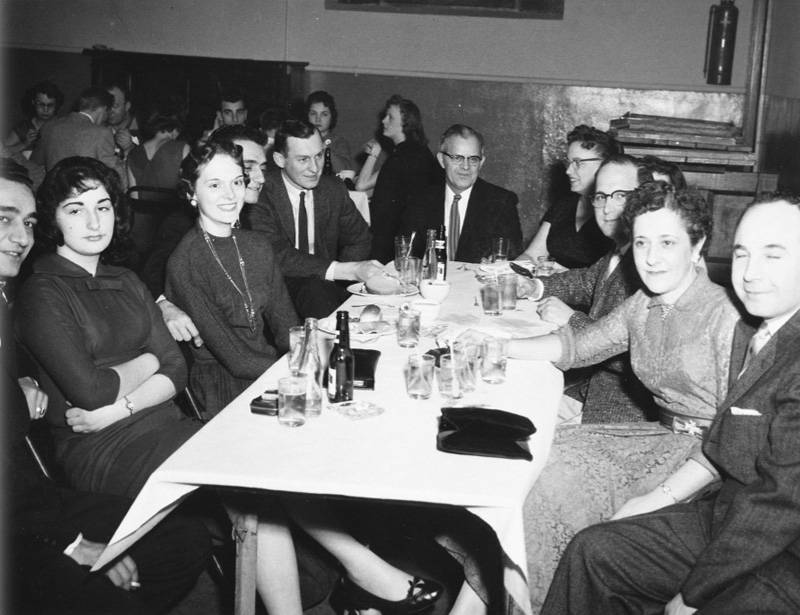
A local newspaper reported that GT&E's total assets at the year-end in 1961 were nearly $2.4 billion, which placed it at number 13 among the top corporations in the country. In addition, revenues and sales for 1961 exceeded $1.2 billion.
Sylvania Electronics merged with General Telephone to form General Telephone and Electronics (GTE) in 1959.
In 1956 and 1962, the plant was enlarged, but in 1969, a dark cloud was forming over the Sylvania plant in Batavia. There was news that a large plant was being built in Smithfield, North Carolina, and fear arose that the company might move!
In 1970, the company suffered losses from trade competition, and in October of the same year, the color television production moved to Smithfield, NC.
It was announced in 1976 that Sylvania, one of the world's largest television receiver manufacturing plants, was closing its doors. It was a sad day for Batavia's economy, especially for all the employees fortunate enough to work there.
Sylvania wasn't just a company. It was a place where friends worked together, new friends were made, and for some, they met their future wives or husbands.
Richard Oddo was one of the many employees who worked for 28 years at the plant on Ellicott St. Rd. He began working there right out of high school.
I interviewed Dick to learn about his feelings about being employed at Sylvania. He worked in the Service Department as an electronic technician. Sylvania also trained him to be on board with the ever-changing technology in the '50s right up to the plant's closing. The Employees Sales Store was a gift to this area. If a set was damaged in transit, it would be fixed in his department and then put up for sale. Some of the company's upper echelons took a new set home on trial to observe firsthand the quality of the picture of the television set. After the trial observation, the set was put into the Employee Store for sale. Dick was one of the people to see a "new" TV set.
He described his years at Sylvania as a wonderful experience. He said it was a joy to go to work every day. It was a well-organized company, clean, and everyone worked together. It had good health benefits and was very family oriented. For example, there would be a Christmas party for the employees' children and summer family picnics. Sylvania Employees Association also hosted annual dinners. In addition, Sylvania sponsored three sports teams, bowling, softball, and golf.
Sylvania always wanted to be on the cutting edge with its products. To learn about competitors, it would purchase a television set from another country or company, have its engineers tear it down, and examine the contents. One of the first TV sets to be explored was a set from Japan. After the set was examined, it was put back together and sold in the Employee Store. Dick was the fortunate one to buy that particular set. He was one of the first people in Batavia to own a color TV set. I was also the lucky one to live next door to the Oddos. When Dick was at his second job, I would go to his house and watch the marvelous small-screen invention of a color TV set with his wife and children.
In the '60s and 70s, just about every family in the area owned a Sylvania TV. They also could have owned a Sylvania transistor radio and, later on, a turntable, receiver, speakers, and a VCR. You could listen to possibly five albums simultaneously on the turntable. You could rattle the windows if you had a good set of speakers.
Another memory was the long piece of furniture that sat in your living room that contained a color television and a high-fidelity stereo system. There were many choices of designs, from Mediterranean or French Provincial to Colonial. Another early advertisement read, "23-inch console model, multi-function wireless remote control. The remote tuner turns the set on and off, changes channels, and adjusts volume using a transistorized hand control."
Over the years, the technology kept improving. After one year, a new model would appear better than the previous year. Today the iPod shuffle has taken the place of our Walkman; a DVR has taken the place of the VCR and the CDs and CD players, our albums and stereo receiver. You can't forget our cell phones that can do everything in one small device. Trying to explain to the younger set what it was like in the early years of technology is challenging.
I, for one, would not change a thing about living in the '60s. There was just something exceptional about listening to the Beatles sing "I Want to Hold Your Hand" on your high-fidelity stereo system. The one theme remains the same: people like to listen to music and watch movies and TV shows. The only thing that has changed is the size of the electric device and the cost. How lucky the people in Genesee County and surrounding areas were to have had the Sylvania plant in their backyard.
It was a sad day when Sylvanias closed its doors in Batavia for the last time and moved to another state.
Today, the word Sylvania is just a memory to those who worked there and to the many customers who knew someone who worked there.



